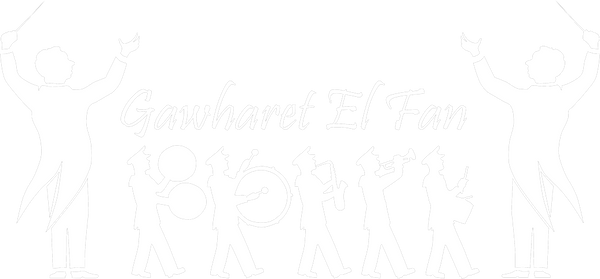
What Exactly is a Darbuka?
Share
The Darbuka
The Darbuka is a drum that we typically class in the World Percussion category of musical instruments. It is a goblet-shaped drum that many people consider to be the leader of percussion instruments in the Middle East and North Africa. It is also played widely across South East Asia, namely in Indonesia and Malaysia.

Figure 1. a Darbuka
The Darbuka is known as a goblet drum because its shape narrows in the middle and widens at the base. This shape is similar to that of a goblet or chalice glass. Historically Darbukas were made of clay or wood with an animal skin stretched over the head; such materials would create high-quality sounds. However, we typically make contemporary darbukas out of aluminium, copper or synthetic fibres, which are ideal as they prevent damage to the Darbuka and don't break as easily as clay. They are also easier to work with and therefore make large-scale production easier.
Darbukas are commonly adorned with beautiful and fantastic designs, differentiating them from almost any other musical instrument. Many would say that a Darbuka isn't complete without a colourful design flaunting the incredible design and technical prowess of the Darbuka's craftsman. One may also note the different designs that the Darbuka can take dependant on its region of manufacture. Darbukas from Turkey use different designs to those from Egypt, which use different designs to those from Indonesia. The Darbuka may well be the best ornamented in the world that is in mass use. We can use various materials to create these fantastic designs, including paints, glosses, Mother of Pearl gemstones and coloured metals, plastics and stones.
To find out about the history of the Darbuka, read into our blog post covering its origins. While you're at it, why not read into Our History as well?
Different names that the Darbuka can take
The Darbuka can be referred to by many names. The name used can vary by the size of the Darbuka in question, or the region in which the name is used. To make matters even more confusing, most people use various names interchangeably, which makes it harder to identify what someone is referring to. For simplicity, we consistently use the term “Darbuka” to refer to the drum in question. However, the below list should help you understand what other people mean when they use different names.
- Darbuka - If you're reading this, you know what a Darbuka is. They are fantastic percussion instruments that create amazing sounds.
- Doumbek - Another word for Darbuka. Some would say that Doumbek and Darbuka are different, but in practice, most people use the names interchangeably.
- Sombaty - A (slightly) larger sized Darbuka.
- Doholla - A very large Darbuka.
- Tabla - In India, this instrument is a two-part drum that's part of the Indian musical heritage. In Egypt, a Tabla means a Darbuka.
- Tarabana/Darabana - Another word for a Darbuka, commonly used across Eastern Europe.
- Bongo - A different instrument that has nothing to do with a Darbuka.
Let’s just analyse the above names in a little more depth. Inside Egypt, we use the words Tabla, Sombaty and Doholla primarily. Since Egypt is commonly agreed to be home to the best of Arabic music, and is also the origin of Our Team, this is important to note.
Outside of Egypt, in most Arab and Western countries, we drop the word Tabla, and replace it with Darbuka or Doumbek:
- Darbuka, coming from the Arabic word Daraba (to strike) is a widespread name that people use.
- We use the word Darbuka when referring to this instrument, and many other Westerners will also do the same.
- Doumbek is another popular name that is used. It is likely named as such because of the sounds the instrument makes when played (namely Doum and Tek).
- The name Doumbek is likely used rather than Doumtek because of the ease of pronunciation.
For a more definitive answer on Darkbua vs Doumbek, read into our blog post covering that very question. Finally, within Eastern Europe (Poland, Romania, etc.), it is unanimously agreed that the name Tarabana/Darabana is used.
Note: You should never refer to the Darbuka as a “Bongo drum” or “the Bongos”. Calling the Darbuka by one of these names is a cardinal sin in the Darbuka world.
Join our family
We pride ourselves in offering everything you could possibly need in diving into the world of Arabic music, be it instruments or knowledge. Look no further than our store for a diverse assortment of Arab instruments! Or if it's expertise you seek... check out our Darbuka Mastery Program!
We would be honoured for you to share our passion. Read into Our History, or perhaps discover how our products are made through our Innovation page. Once you've sated your appetite, invite others to join the family too through our social media buttons below! Also, subscribe to our mailing list to keep up with all of the latest goings-on here at Gawharet El Fan!

